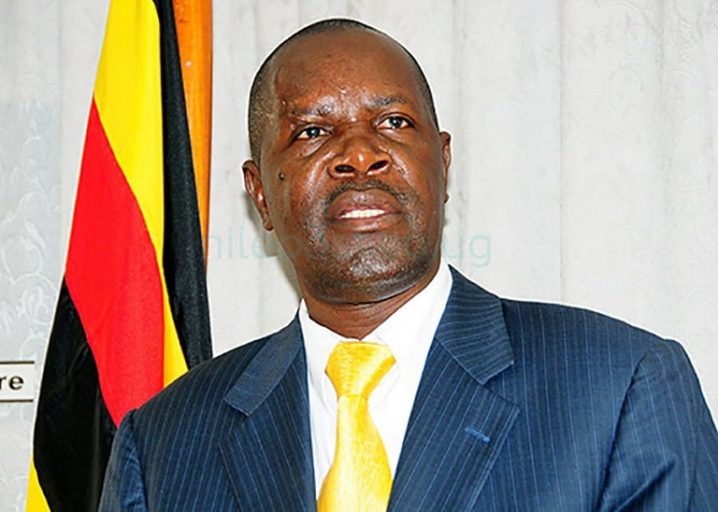By Lukanga Samuel
In late 2019, a new virus, severe acute respiratory syndrome coronavirus (SARS-CoV-2), emerged in Wuhan, China, causing an infectious disease that would later be named coronavirus disease 2019 (COVID-19) by the World Health Organization on February 11, 2020.
This disease quickly spread across the globe, with a very rapid increase in new cases noted in many European countries and the United States between early February and early March 2020. On March 12, 2020, the World Health Organization declared the spread of COVID-19 a global pandemic. As of May 29, 2020, a total of 5,657,529 cases of COVID-19 were registered worldwide, with 356,254 confirmed deaths.
To slow the spread of disease, policy makers and public health experts in many countries have developed a catalog of measures that are applied to a variable degree in most countries worldwide, including restrictions on interpersonal contact, assembly, and travel for example., social distancing: recommendations for sanitation, hygiene, and the wearing of masks in public places; rapid isolation of infected patients; and use of personal protective equipment when treating affected patients. However, because SARS-CoV-2 is highly contagious, further spread of the disease is expected and appears to follow an east-to-west and centripetal pattern.
Currently, causal treatment is available for COVID-19, and a variety of vaccines against SARS-CoV-2 are also present.
The health-care economy, of course, is not insulated from events affecting the overall economy. Since March 2020, the rapid increase in the number of COVID-19 patients requiring hospitalization and emergency treatment, as well as in public health and policy measures, has affected hospitals and private-practice groups in several ways.
In Uganda, the health ministry is missioned to provide the highest possible level of health services to all Ugandans through delivery of promotive, preventive, curative, palliative and rehabilitative health services at all levels.
The COVID-19 crisis came as a surprise to the country and its health-care system. Undoubtedly, events over the past will be investigated in greater detail in the future.
The crisis may unlock ingenuity in drug design and vaccine development. In the clinical arena, it has already forced the rapid introduction of telemedicine at all levels of the health-care system. If implemented properly, the latter clearly can translate into considerable time savings for patients and physicians. It will be important to maintain this spirit of innovation throughout the Ugandan health-care system.
Uganda’s health minister, Hon. Dr. Jane Ruth Aceng Ocero, holds a Bachelor’s Degree in Medicine (MBChB), MMED (Pediatrics), Masters in Public Health and a Diploma in Health System Strengthening, a Pediatrician expert and currently at the level of Senior Consultant Pediatrics. She is also a Public Health expert. As Minister of Health, possessing the Constitutional Powers and functions of spearheading the Ministry. Among them are Administration, Policy Formulation and Direction. She is also responsible for defending the Ministerial budget and issue orders and statutory regulations on the sector. When it came to the COVID-19 Crisis, informed Ugandans will always remember her resilience in executing her duties.
Dr. Diana Kanzira Atwine, being the permanent secretary, the top accounting officer of the same health ministry, is a Ugandan medical with MBChB, MMed. Learned patriotic citizens of Uganda have and will always remember her commitment in health service technical leadership even when politicians shouted at her for their political capital.
The smashing ratio of the two she- doctors in the health ministry has been proved by himself the president of Uganda, evidenced by his reappointing them in their respective dockets for the second consecutive term.
Uganda has a robust health sector development plan that seeks to, among other goals “accelerate movement towards Universal Health Coverage with essential health and related services needed for promotion of a healthy and productive life”.
The health of the population is central to the socioeconomic development of the country. Unfortunately, the COVID-19 pandemic significantly threatens to undermine and derail the gains the country has achieved in improving the health and social-economic development of Uganda.
To ensure that the country responds adequately and mitigates the impact of the COVID-19 pandemic, the Ministry of Health embarked on the development of these guidelines through a consultative, participatory and transparent process with the involvement of all stakeholders.
In early to mid-March, the local governments started implementing temporary restrictions on public life and non essential work in an attempt to decrease the spread of the virus, leading to a temporary economic shutdown. Accordingly, Uganda’s economic output declined sharply and drastically. Simultaneously, the number of people filing for unemployment rate increased rapidly,
In early May, the Ugandan government started to place increasing emphasis on the necessary economic recovery from the COVID-19–related temporary shutdown.
Institutions and their leaders should learn from their successes and failures in handling the primary medical and secondary economic COVID-19 crisis.
A stable and sustainable path to financial recovery will require a fine balance between improving revenues and decreasing expenses. For hospitals, the main source of revenue is income from clinical operations, and the largest source of expenses is staff compensation. Faced with a decline in revenue from elective procedures, surgeries, and therapies, virtually all organizations have implemented cost-cutting measures, including, in some cases, painful cuts to salaries and benefits, and (possibly affecting the medical equipment industry) virtually systemic freezes on capital expenditures.
All organizations, including hospitals and health-care systems, function in the context of their external environment, and the emergence of COVID-19 can serve as a prime example of this fact.
Even in normal times, uncertainty is a constant element in the development of a strategy by health systems; examples may include uncertainties due to unpredictable progress or setbacks in research and drug development, regulatory changes, and digital disruptions.
With the increasing pace of change within the health-care industry and society, the magnitude of this uncertainty has also increased.
For God and my Country!
Lukanga Samuel
lukangasamuel55@gmail.com
+256 785717379
The writer is a social development enthusiast and a judicious youth leader from Nakaseke District
Do you have a story in your community or an opinion to share with us: Email us at editorial@watchdoguganda.com













